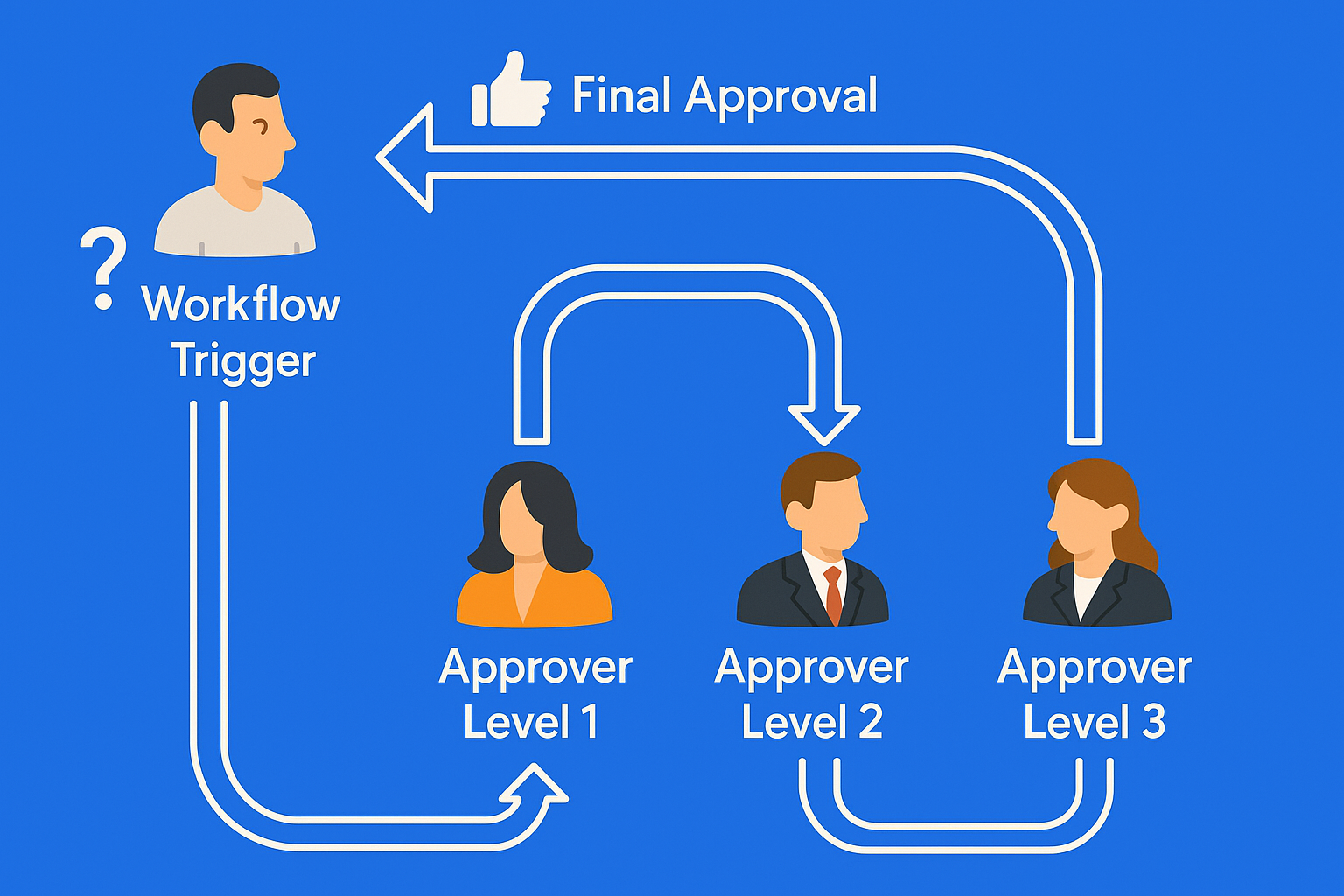Why Automating Content Approvals Is a Game-Changer for Teams
Automating content approvals saves time, reduces errors, and gives teams clarity and speed. Forget endless emails and lost versions, automation brings structure, transparency, and efficiency so your team can focus on creating quality content.

Every team that creates content, whether for marketing, internal messages, or clients, must have an approval process. At first glance, it seems simple: someone writes a text, another person reads it and confirms it. But in reality, it’s often not that easy. When everything is done manually - through emails, chat messages, and many versions of documents - the process becomes slow, tiring, and full of mistakes. This is where content approval automation helps. It gives teams speed, clarity, and saves valuable time.
Key Takeaways
- Manual approvals cause confusion and delays - Email threads, unclear ownership, and version control issues slow teams down.
- Automation creates clarity and flow - A centralized system tracks progress, sends reminders, and keeps feedback organized.
- Teams save time and reduce stress - No more chasing approvals or searching for the latest version.
- Consistency improves with structured workflows - Every piece of content follows the same steps, ensuring quality and accountability.
- It's scalable for growing teams - Whether you're small or large, automation supports growth without chaos.
Problems with the Traditional Content Approval Process
Imagine this situation: a team is working on a campaign. Texts go through several people - a writer, a designer, a manager, and finally a director. Everything happens by email. One person sends a file, another gives comments, the third sends back a new version. Soon no one knows which is the latest version and who needs to approve it. This leads to:
- Communication overload - everyone writes to each other, but the overall picture is lost.
- Unclear workflow - there is no clear system of who is next and where the content currently stands.
- Delays - one approver who is late can block the entire team.
- Risk of mistakes - it often happens that someone works on the wrong version of the document.
This manual approach may work for small teams and simple projects, but as soon as the number of people and the amount of content grows - the process becomes a bottleneck.
What Does Automation Bring?
Automation solves all these problems because instead of manual steps, it introduces a centralized system where it is clear what, when, and who approves. Here’s what that means in practice:
- Centralized workflow - all content and comments are in one place.
- Transparency - everyone sees what stage the content is in and who is next.
- Automatic reminders - the system sends notifications to those who are late with approval.
- Faster decisions - no waiting and wasting time, the team can move forward immediately.
All of this can be done if you use a platform like EasyContent. In this way, the process does not depend on whether someone remembered to send an email, but the system itself ensures that everything runs smoothly.
Key Benefits for Teams
Automating content approvals brings a number of concrete benefits to teams.
- Time savings - when unnecessary emails and repetitions are eliminated, the team gains hours of extra time that can be invested in creative work.
- Increased productivity - the team focuses on creation and strategy, instead of administration and tracking versions.
- Reduced conflicts - it is clearly documented who approved what and when, so there are no misunderstandings.
- Consistency and quality - the approval process always follows the same steps, which ensures a stable quality level.
- Scalability - when the team grows or the workload increases, the automated system easily supports new processes and people.
In other words, teams that use automation have an advantage because they can focus on what really matters - creating quality content.
Real-Life Examples
To make everything even clearer, let’s look at a few practical examples.
- Marketing teams - campaigns often require approval from designers, managers, and leadership. With automation, all these steps are pre-set in the system, so the content moves naturally without extra back-and-forth.
- Agencies - when working for multiple clients, it’s easy to lose track of who approved what. Automation allows them to clearly track each project and deliver materials faster.
- Internal teams (HR, communications) - announcements for employees or internal campaigns go through fewer delays and errors, which means employees get information on time.
In all these cases, the common point is the same: less wasted time and a clearer process from start to finish.
Best Practices for Implementation
Introducing automation doesn’t have to be complicated, but it’s important to set things up correctly from the start.
- Define the workflow - map out the process: who creates, who approves, and in what order.
- Choose the right tool - there are many tools such as EasyContent, Monday.com, Notion, or specialized content management systems.
- Educate the team - people need to understand why automation is being introduced and how it will make their work easier.
- Gradual introduction - you don’t need to automate everything at once, start with one process and expand the system later.
- Monitoring and optimization - regularly check if the system works and where it can be improved.
With this approach, the transition to automation is easy and the team adapts quickly.
Conclusion
Automating content approvals is not just a technical addition, but a transformation of the way teams work. Instead of endless emails, document versions, and waiting - the team gets clarity, speed, and efficiency.
For small teams, this may mean finishing projects faster. For large teams - it means having control and oversight over complex campaigns. In both cases, the result is the same: less stress and more time to create quality content.
If your team is still using manual approval processes, maybe it’s the right time to think about moving to content approval automation. The benefits are clear: better organization, faster work, and greater team satisfaction.






